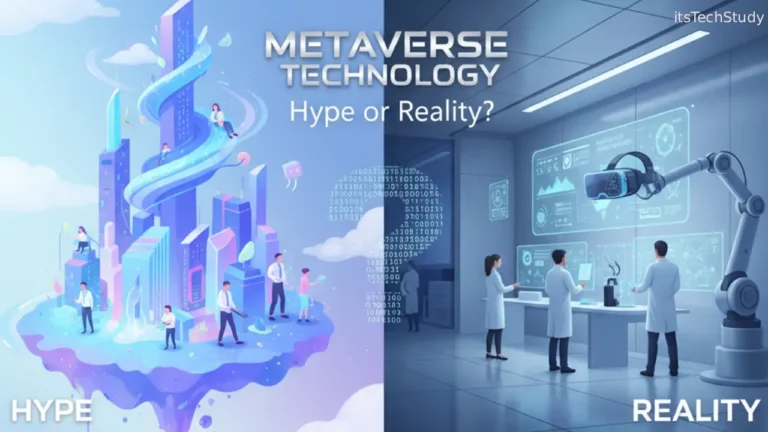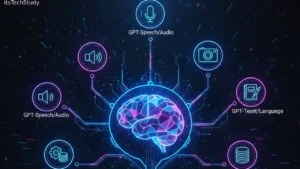Introduction: The Digital Shift in Education
A decade ago, online learning was considered an alternative – something that supplemented traditional classrooms. Fast-forward to 2025, and it has become the core of global education systems. Technology in education is no longer just about convenience; it’s about creating meaningful, personalized, and interactive learning experiences for students of all ages.
The rise of Artificial Intelligence (AI), Virtual Reality (VR), and cloud-based platforms has redefined how teachers teach and how learners learn. But this rapid transformation hasn’t been without challenges — educators are now faced with the task of finding the right tools, balancing screen time, ensuring data privacy, and maintaining human connection in a digital environment.
In this article, we’ll explore how technology is changing education, the best online learning tools for 2025, their pros and cons, and how educators and students can maximize their benefits for long-term learning success.
The Evolution of Educational Technology
Technology’s role in education has evolved through several stages – from computer-based learning in the 1990s to interactive smartboards and mobile learning apps today. The COVID-19 pandemic accelerated this transformation, forcing schools, universities, and training institutions to adopt online tools almost overnight.
By 2025, education has become a hybrid ecosystem, blending in-person teaching with digital learning platforms that enhance accessibility, creativity, and collaboration.
Key Trends Driving Tech in Education (2025):
- AI-Powered Personalized Learning: AI helps teachers understand student behavior, learning pace, and strengths to deliver customized lessons.
- Gamification: Learning is becoming fun through badges, rewards, and challenges that boost motivation.
- Immersive Technologies (VR/AR): Virtual and augmented reality provide realistic simulations, making complex subjects easier to understand.
- Cloud-Based Collaboration: Platforms like Google Workspace for Education and Microsoft Teams simplify teamwork and data sharing.
- Data Analytics: Schools use analytics to track progress and improve outcomes.
Why Technology Matters in Modern Education
In today’s fast-paced world, education is not just about knowledge retention — it’s about developing skills that align with a tech-driven society. From critical thinking and creativity to coding and communication, digital tools empower learners to take control of their education.
The Importance of Tech Integration
- Accessibility: Students can learn anytime, anywhere.
- Engagement: Interactive lessons make learning more enjoyable.
- Scalability: Institutions can reach more students efficiently.
- Collaboration: Technology bridges gaps between teachers, parents, and learners.
- Lifelong Learning: Adults can reskill and upskill with online courses.
Top Online Learning Tools for 2025
The year 2025 has introduced some of the most powerful tools in the EdTech industry. Here’s a look at platforms that are reshaping modern education:
| Tool Name | Best For | Key Features | Price Range | User Rating (2025) |
|---|---|---|---|---|
| Google Classroom | Schools & Institutions | Assignment management, collaboration, integration with Drive | Free / Premium (Workspace) | ★★★★★ |
| Coursera | Higher Education & Skill Training | University-level courses, AI-powered recommendations | Free / Paid Certificates | ★★★★☆ |
| Kahoot! | Interactive Learning | Gamified quizzes, live sessions | Free / Premium | ★★★★☆ |
| Duolingo | Language Learning | AI tutoring, progress tracking, gamified lessons | Free / Plus | ★★★★★ |
| Canva for Education | Creative Projects | Templates, group collaboration, easy design tools | Free | ★★★★★ |
| Zoom for Education | Virtual Classrooms | HD video, breakout rooms, integrations | Free / Premium | ★★★★☆ |
| Quizlet | Revision & Practice | Flashcards, study modes, progress analytics | Free / Premium | ★★★★☆ |
The Pros and Cons of Using Online Learning Tools
Like any technology, online education tools have both strengths and drawbacks. Knowing them helps educators and students make informed choices.
Pros:
- Flexibility: Learn at your own pace, from anywhere.
- Engagement: Interactive formats increase retention.
- Diverse Resources: Access to global educators and courses.
- Accessibility: Helps students with disabilities through assistive tools.
- Cost-Effective: Reduces infrastructure and travel costs.
Cons:
- Digital Divide: Not everyone has equal access to devices or internet.
- Distraction Risk: Social media and multitasking can reduce focus.
- Limited Social Interaction: May lead to feelings of isolation.
- Data Privacy Concerns: Need for secure learning platforms.
- Dependence on Technology: Over-reliance can hinder traditional skills.
How to Choose the Right Online Learning Tool
With hundreds of platforms available, choosing the right one can be overwhelming. Here’s a step-by-step guide:
- Identify Learning Goals: What are you trying to achieve – skill improvement, certification, or creative learning?
- Check Compatibility: Ensure the platform works on your device and internet speed.
- Look for Engagement Features: Interactive quizzes, videos, and AI support enhance learning.
- Evaluate Security: Ensure data protection and privacy compliance.
- Test the Free Version: Most tools offer trial periods – use them before subscribing.
- Read Reviews: Learn from other educators and students’ experiences.
Integrating Technology in Classrooms: Best Practices
Effective tech integration goes beyond just using online tools. It’s about embedding them into the learning process meaningfully.
Practical Tips for Teachers
- Start Small: Begin with one or two digital tools and expand gradually.
- Blend Methods: Combine traditional teaching with tech-based learning.
- Encourage Collaboration: Use tools like Google Docs or Padlet for group projects.
- Track Progress: Use analytics to identify struggling students early.
- Promote Digital Literacy: Teach safe and ethical use of technology.
Practical Tips for Students
- Set a Routine: Schedule regular study times.
- Stay Organized: Use digital planners or calendar apps.
- Engage Actively: Participate in online discussions and quizzes.
- Limit Distractions: Turn off unnecessary notifications while studying.
The Role of Artificial Intelligence in Education
AI has become a game-changer in education. It personalizes the learning experience, making lessons adaptive and efficient.
Examples of AI in Learning Tools:
- Duolingo’s AI Tutor: Adjusts difficulty based on student performance.
- Coursera’s Recommendation Engine: Suggests courses tailored to career goals.
- AI Grading Tools: Help teachers save time by automating assessments.
- Chatbots: Provide instant answers to student queries.
Benefits of AI in Education:
- Personalized learning paths
- Real-time feedback
- Reduced teacher workload
- Predictive analytics for early intervention
The Future of Technology in Education
By 2030, education is expected to be more immersive, data-driven, and accessible. Technologies like AI tutors, VR classrooms, and blockchain-based credentialing will redefine learning further.
We’re moving toward a world where every learner, regardless of geography, can access world-class education from their device. However, the challenge lies in ensuring equity, ethics, and human connection in this digital journey.
Conclusion: Building a Smarter, More Connected Future
Technology in education isn’t just a trend – it’s the foundation of the future of learning. When used wisely, it bridges gaps, fosters creativity, and prepares students for a digital-first world.
As we move into 2025 and beyond, the focus should be on blending human insight with digital intelligence to create an education system that’s inclusive, adaptive, and inspiring. The goal isn’t to replace teachers – it’s to empower them and their students to reach their full potential with the help of technology.
FAQs About Using Technology in Education
Q1: What is the main benefit of using technology in education?
Ans: Technology makes education more accessible, interactive, and tailored to individual learning needs, helping students learn at their own pace.
Q2: Which online tools are best for schools in 2025?
Ans: Google Classroom, Canva for Education, Kahoot!, and Quizlet remain the top choices for classroom collaboration, creativity, and engagement.
Q3: How does AI improve the learning process?
Ans: AI provides personalized learning experiences by analyzing student behavior and adapting content accordingly, making education more efficient.
Q4: Are online learning tools suitable for young children?
Ans: Yes, when monitored by parents or teachers. Platforms like ABCmouse and Khan Academy Kids are designed specifically for young learners.
Q5: How can teachers stay updated with technology?
Ans: By attending webinars, joining EdTech communities, and regularly exploring new digital platforms designed for education.
Q6: Is online education replacing traditional schools?
Ans: Not entirely. The future is hybrid — a balanced blend of in-person and digital learning for flexibility and effectiveness.












No Comments Yet
Be the first to share your thoughts.
Leave a Comment